Informal video about adjusting the parking brake on a 2014 Dodge Ram 2500.
James Langan
Copyright James Langan/RoadTraveler All Rights Reserved
Resource: Centramatic Balancers

Trucks, Tech, Reviews, ADV Travel
James Langan
Copyright James Langan/RoadTraveler All Rights Reserved
Resource: Centramatic Balancers
Backgrounder
A recent Nevada Highway 95 trip from Northern Nevada to Southern Nevada, and back, a very familiar route, produced some interesting data. People often make contrary statements about shared fuel economy information, generally well intentioned but not always accurate, including:
1) My similar truck/camper does much better (or worse). 2) An aftermarket engine tune would produce superior results (doubtful but possible). I could write several such hearsay proclamations.
Let us remember that similar is not the same, and this includes engine tunes, programming, and power ratings. Modifying engine performance is not an option as long as I want to keep my emissions equipment on my truck and continue registering it in the zip code where I live. However, my 350 horsepower, G56 manual truck has plenty of torque and power, and if I wanted more I’d likely regear the differentials.
Now, let’s review some fuel economy 101.
Everything that is different can matter, including:
-Driver
-Tires
-Speed
-Engine output (also brand, configuration, etc.)
-Gearing
-Terrain/conditions
-Weight (less critical than many think, depending on the outfit)
However, the two big ones often not fully appreciated are:
–Engine speed: pumping losses
–Vehicle speed: aerodynamic losses
Engine pumping losses are of minimal concern for this rig. The 2017 Ram/Cummins has the tall factory 3.42:1 gears, a 6-speed manual transmission, and runs 35-inch tires, resulting in low rpm in overdrive.
The aerodynamics are horrible. This is a heavy-duty truck with a big winch bumper/grille guard, sliders, and a flatbed with mud flaps; these are important details. However, the frontal area and drag coefficient of the truck camper (and truck) are a huge factors.
It is possible to get similar (or better) mpg with a heavier truck and trailer combination that is more aerodynamic; that’s how critical wind load and speed are.
Fuel Economy Data
The test below was informal, if you want something more detailed, with additional focus on controlling variables, you’ll likely enjoy this post: Tread Matters
Southbound: Fernley to Beatty, Nevada
Vehicle: 2017 Ram 2500 Cummins/6-speed manual
Date: March 2, 2019
Distance: 295.6 miles (odometer corrected)
Cruising speed, where legal: 65 mph
RPM: 1,650
Approx. gross weight: 11,500 pounds
MPG: 13.47
Northbound: Las Vegas to Hawthorne, Nevada
Vehicle: 2017 Ram 2500 Cummins/6-speed manual
Date: March 4, 2019
Distance: 302.0 miles (odometer corrected)
Cruising speed, where legal: 63 mph
RPM: 1,600
Approx. gross weight: 11,500 pounds
MPG: 13.26
Speed Eats MPG
Because the terrain and conditions over Nevada Hiighway 95 have repeatedly given better fuel economy going southbound than northbound, I intentionally reduced my speed going north to try to limit the difference. It worked, two mph made a difference. My educated estimate is that at 65 mph, fuel economy would have been in the high twelves on the trip north, and going as fast a 70 mph would have droped mpg into the mid to low twelves.
Want a quick example of how much speed and conditions matter? The same outfit when it weighed less and was slightly more aerodynamic with the stock front bumper, cruising almost completely at a constant 75 mph on Interstate 80 across Northern Nevada, Elko to Reno, including maintaining 75 mph up and over mountain passes, and a bit of off-highway travel to camp, yielded 11.57 mpg over a distance of 300.4 miles. Considering the use and conditions, that was an appropriate result, inline what was requested from the chassis.
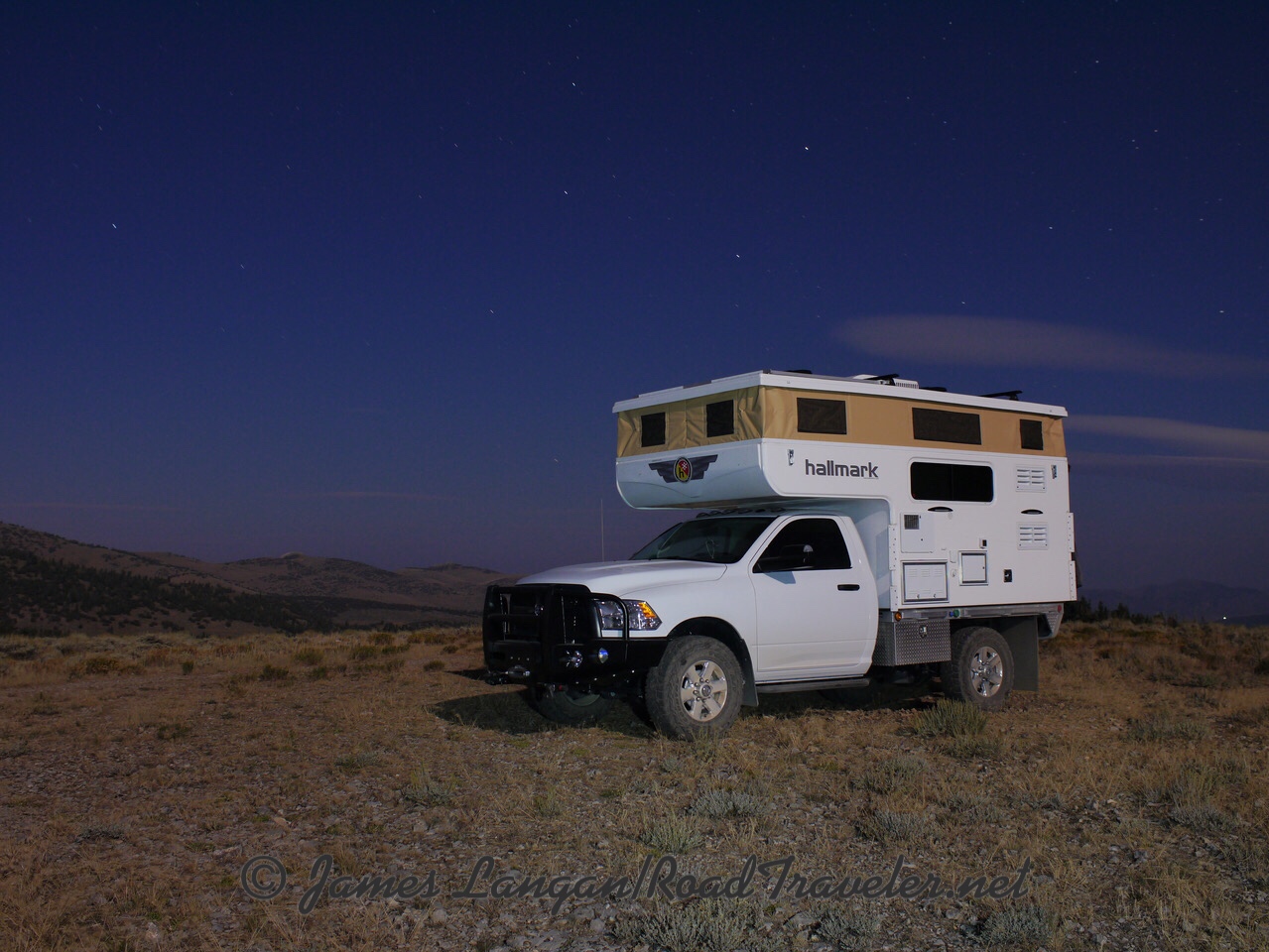
James Langan
Copyright James Langan/RoadTraveler All Rights Reserved
Resource linK:

Our 2001 Ford 7.3L Power Stroke Diesel engine has been modified, mostly for better efficiency, with new injectors, fuel and oil pump upgrades, intake and exhaust mods, and a tuner. Exhaust gas temperature (EGT) is not currently a problem. The truck has a 6-speed manual transmission, with an aftermarket South Bend Clutch. We have a Four Wheel Campers popup slide-in, and sometimes tow a trailer through mountainous terrain. The truck runs great, we’re just trying to add a bit more power while remaining practical. Would you upgrade the turbo or change from the original 3.73:1 gears to a lower 4.10:1 ratio?
Do you know how much power/torque you are making? What is the gross weight of your 2001 Ford Super Duty and Four Wheel Camper loaded for most trips? How much weight and wind load does your trailer add?
Sounds like a turbo could complement your previous mods if you are needing more air, but if the fuel is burning well and completely it might be unnecessary. How many miles on your current turbo? Turbo lifespan may be a consideration?
Lower gearing multiplies torque. I’m a fan of lower gearing in general, particularly on gasoline-powered rigs, but moving from 3.73:1 to 4.10:1 gears is not a huge change for the cost of the surgery. Only you can determine if the added performance will be worthwhile. You will likely lose some fuel economy with lower gears.
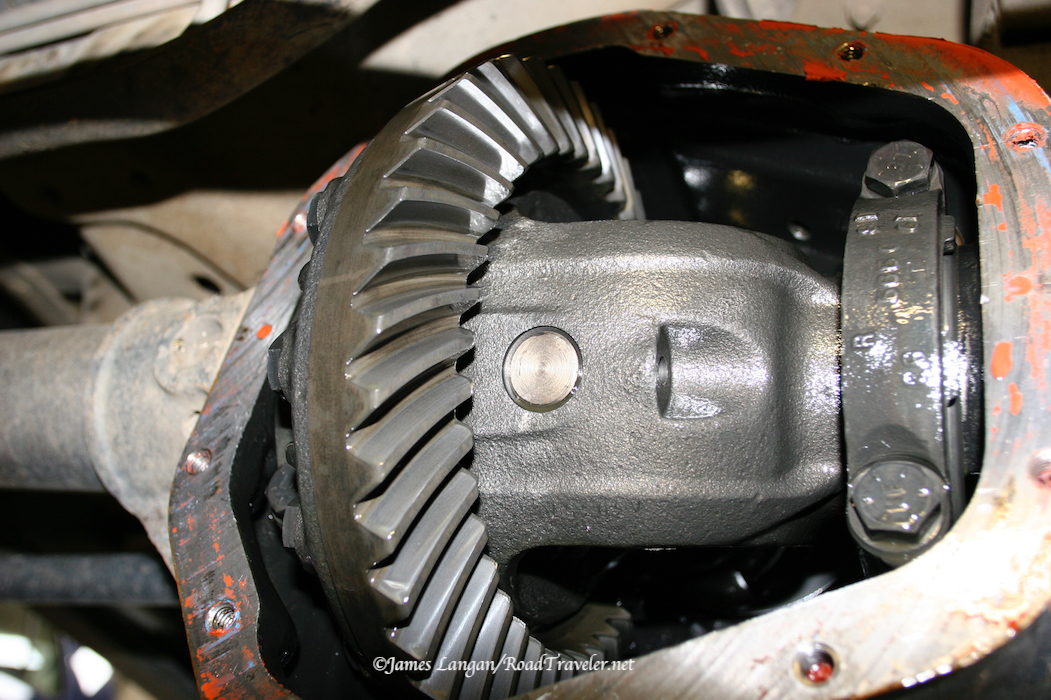
If overall gearing is too low—as was the case with my ’96 F-350 with factory 4.10:1 gears, only 33” tires, and a 0.77:1 top cog—then overdrive may be required to maintain comfortable highway rpm when transmission sympathy would dictate using direct. However, that may not be a concern with your setup.
Is the top ratio of your ZF-S6 tranny 0.72:1? If so, that’s rather tall for a manual gearbox, and you probably have plenty of overdrive combined with 35” tall tires, depending on your highway speeds. Spending some time in 5th/direct at higher road speeds with your current gearing, as well as playing with some online gearing calculators, should be informative.
Do you currently downshift out of overdrive when climbing big hills? If so, is direct/5th enough for most grades unless the road requires lower speeds? Don’t be overly hesitant to grab a lower gear and spin the engine a little faster (while keeping an eye on the gauges), which reduces the load on the tranny and clutch. You might have all the lower gearing you need at your fingertips with your transmission’s underdrive gears. Unless you are wanting to avoid downshifting, are using all the power you already have, and/or would like to accelerate more quickly.
It’s worth noting that making more torque and power with a turbodiesel engine is generally much easier, less expensive, and less invasive than with gasoline-powered platforms. Lower gearing for gas trucks can provide a very satisfying boost in felt torque and acceleration compared to similar money spent on engine modifications. I’ve chosen to add lower, 4.88:1 gears to three gas engine rigs, one Jeep and two Toyotas, but have yet to re-gear a diesel truck.
James Langan
Copyright James Langan/RoadTraveler All Rights Reserved
Real World Examples
1) 1996 F350 7.3L Power Stroke, 4.10 differential gears, 5-speed manual transmission. This truck was conservatively modified with thirty-three inch tires, heavy bumpers, and mild engine performance modifications.
It should be noted that the older (pre-Super Duty) Ford pickups had relatively poor brakes compared to the later 1999-up trucks with four-wheel disc brakes, though they’ve never been a problem for my use and driving style.
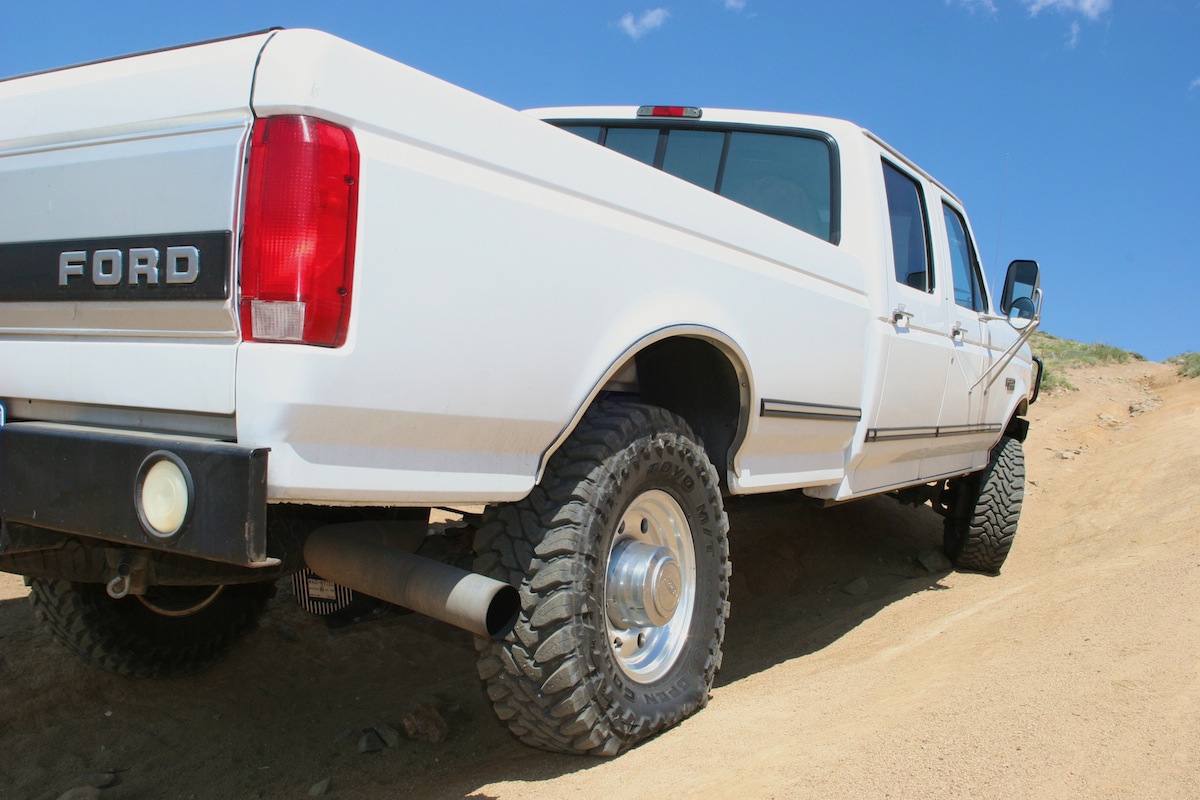
This rig was a daily-driver commuter, long-distance road traveler, tow/hauling workhorse, off-highway toy, and magazine project for the first several years of its life. Additions to our fleet put the brakes on the rapid accumulation of miles, and is the reason this old truck has very low miles for its age.
During its 127,000 miles, Pull Dog has yet to need brake pads or shoes. Never. I used to clean and lube the caliper slide rails regularly to prevent sticking and improper wear (this maintenance is actually mentioned in the owner’s manual), adjust the rear brake shoes to keep the pedal up and the parking brake working properly, and the brake system was bleed a couple times…that’s it. When this old F350 needs brakes, you’ll likely read it here first, though I need to start driving it again before it’s going to need new friction material.
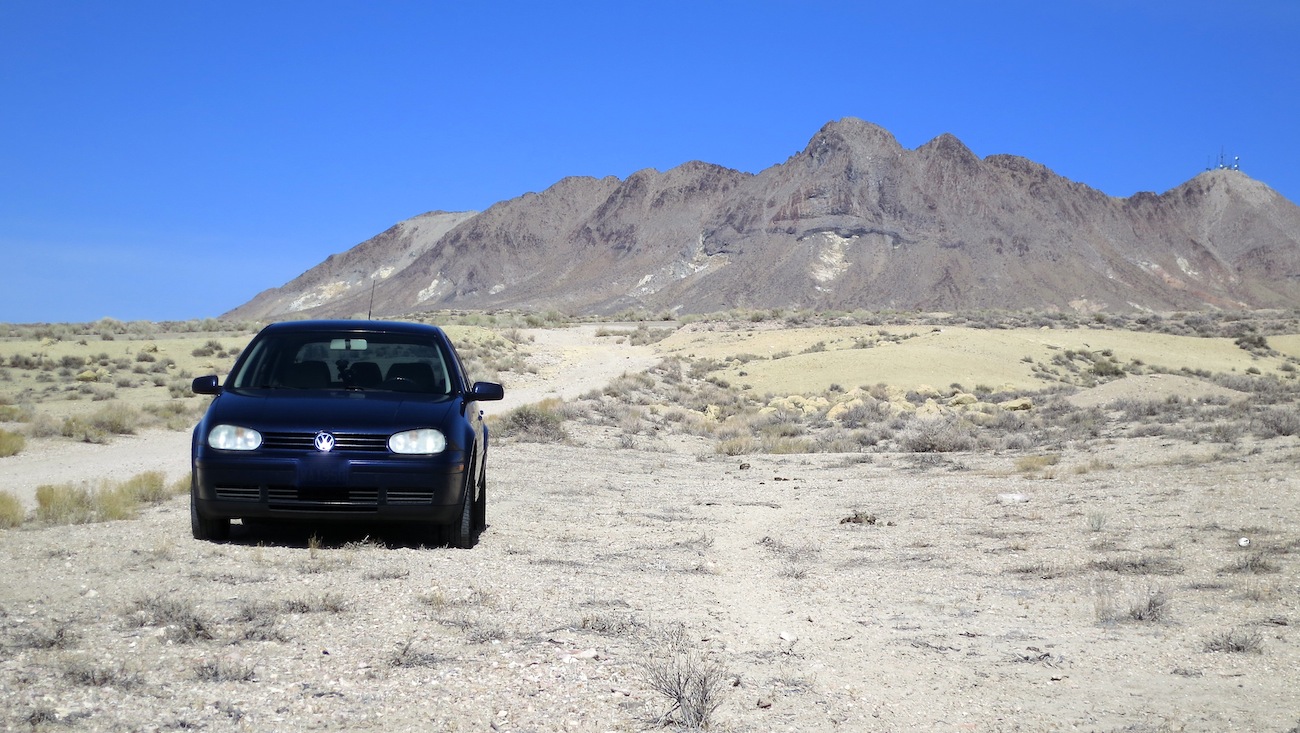
2) 2000 VW Golf 1.9L TDI (diesel), 5-speed manual tranny.
This little car has been my wife’s daily-driver for over ten years, and we take it on long car trips when a truck or 4WD isn’t required. She prefers to drive the suburban surface streets to work instead of the freeway most of the time.
It’s worth noting that while these little VW TDIs can make more power, and for some this is an enthusiast car, for us it’s just comfortable, economical transportation and it’s the one vehicle in my fleet that is bone stock. The car gets it’s recommended oil changes with premium 5W-40 synthetic oil every 10,000 miles, a new air filter every 10k because I’m a stickler for clean air, I’ve changed the transaxle lube every 50k as a precaution, and I’ve done the other minimum maintenance or repairs. Very little extra care, we just drive it.
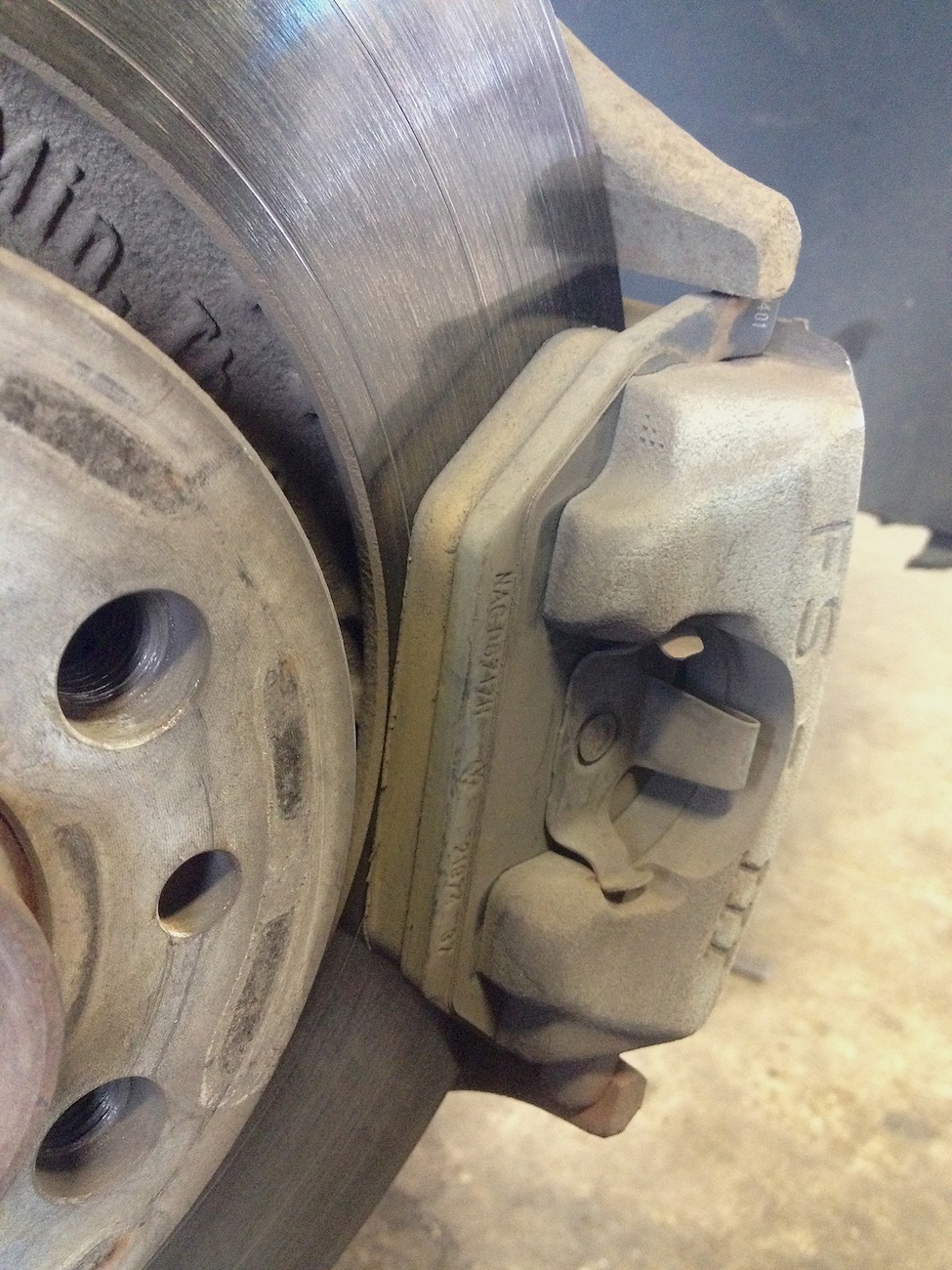
The car’s odometer has reached 152,000, and we’ve logged all but the first 18,000. It needed rear brakes at 82k, but the fronts have yet to be touched. It’s not uncommon for moderately driven (and braked) vehicles to need rears before fronts. Based on the pictures I took when Les Schwab rotated and balanced the tires recently, I think the front pad might go another 100k; there’s plenty of meat on the pads! Maybe it will be two sets of rear pads to one set of fronts?
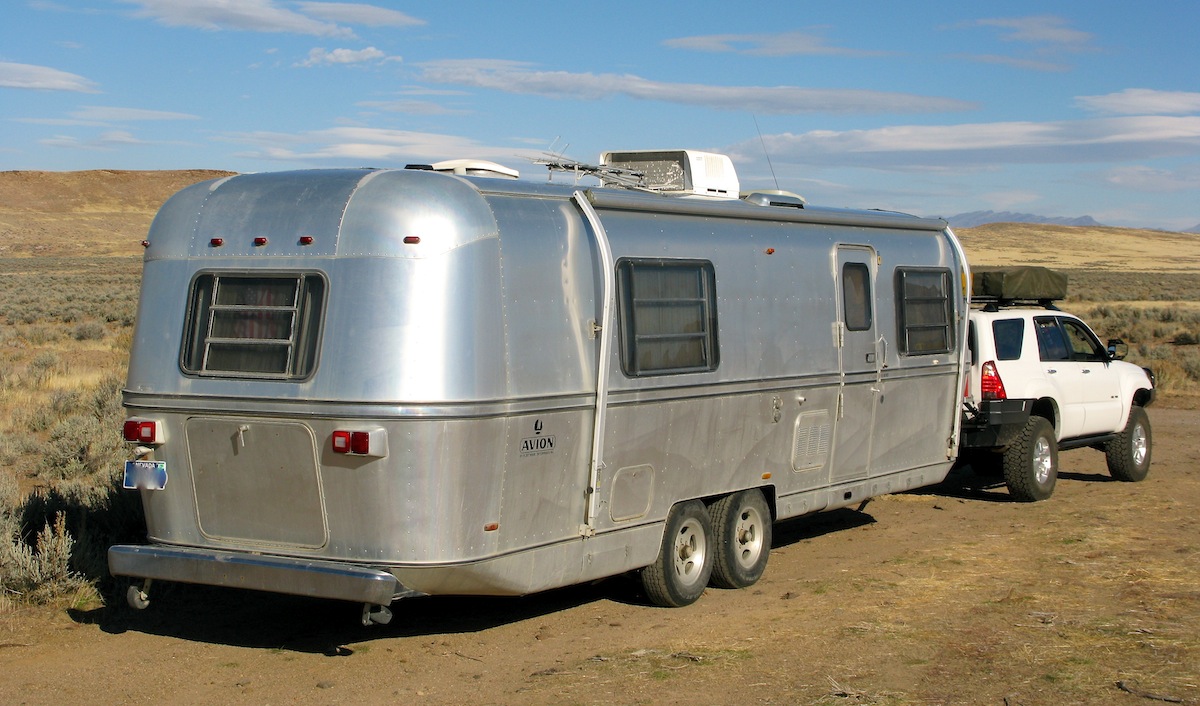
3) 2006 Toyota 4Runner 4.7L V8, 5-speed auto tranny, 3.73:1 gears when new and stock, before 4.88 ring & pinions were added. This car is heavily modified and very heavy, 5,500 pounds wet but unloaded, and has seen extensive off-highway use, including many technical trails, and plenty of towing miles.
With only 60,000 miles this wagon has some years ahead before I’ll be able to report if it attained the RoadTraveler.net 100k challenge. But at a little more than half way there, the brake pads are looking very thick. The odds are good.
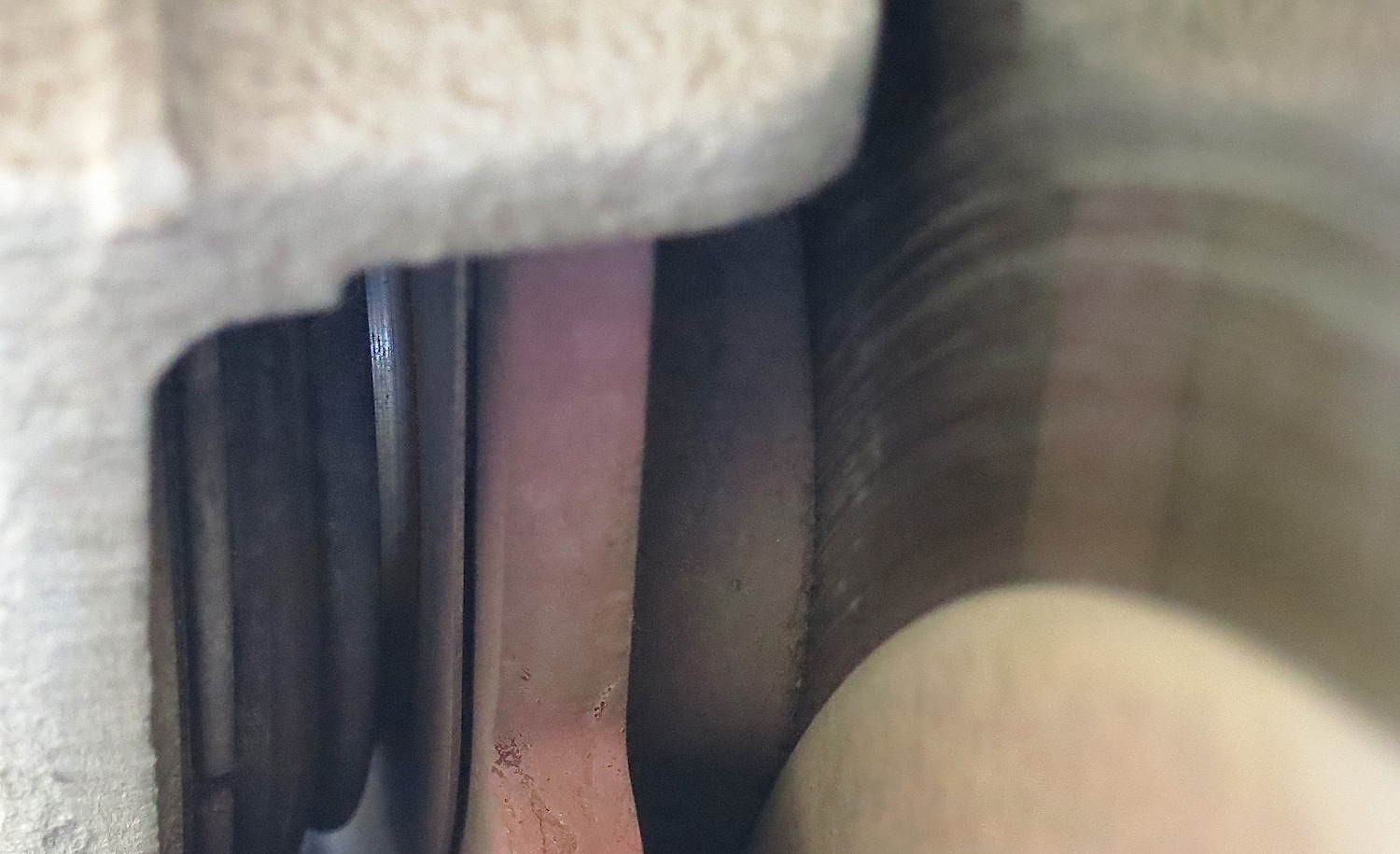
Copyright © 2012 James Langan
I’m not talking about an engine or chassis making it to 100,000 miles. The days when it was a major accomplishment for vehicles reach 100k without an engine overhaul or major repairs are in the history books. For decades now vehicles have been built to higher standards, are more reliable, and it’s no great achievement nor are bragging rights attached to driving to six digits.
Tune Ups and Maintenance
Most modern gasoline-powered engines no longer need tune-ups, largely because tune-ups had much to do with the ignition system, and the ignition system as we knew it has been consolidated. The distributor cap, rotor, plug wires, and the ignition coil are mostly missing on modern systems. In their place are coil-on-plug, electronically-controlled systems that work amazingly well and need very little, if any, attention. Some cars and trucks have spark plugs that last more than 100,000 miles!
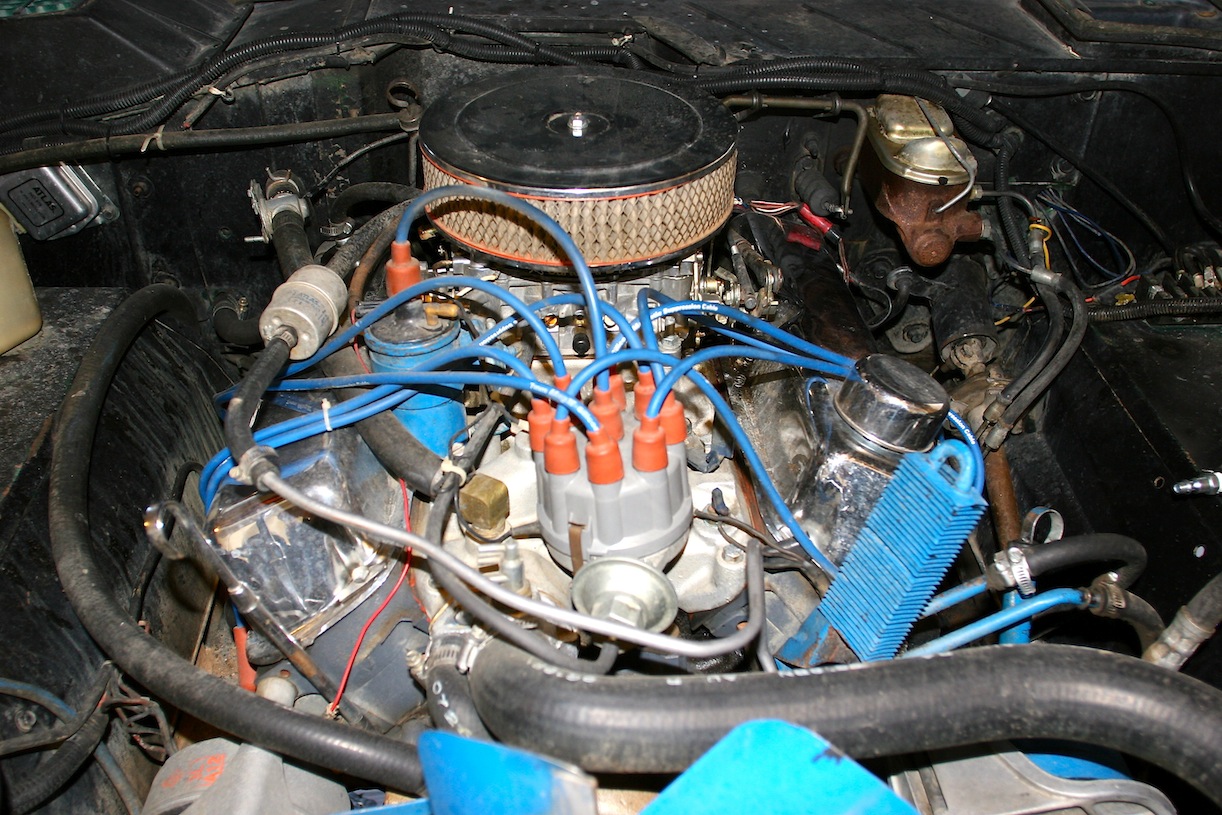
Fuel and air filters were part of our old tune-ups, but with gas-powered, fuel-injected vehicles the filter is in the tank and not easily changed. Air filters are still accessible, and should be serviced regularly, but are sometimes forgotten and neglected. Air filter maintenance is more important for off-pavement travelers or those that live in particulate environs. Few vehicles, even 4WDs that might benefit, have serviceable wheel bearings, U-joints, or driveline zerks. Still, these parts also routinely last for 100,000 miles and beyond.
It’s easy to understand why routine maintenance is oft forgotten, there’s so little of it required that non-enthusiasts drivers forget about caring for their mechanical investment. Their cars still run well for years on little more than fuel and periodic oil changes. (Of course, RoadTraveler.net readers and most gear-heads don’t ignore the mechanical stuff on their rides.) So if new vehicles are so reliable, where’s the 100k challenge? Let’s look a little deeper…
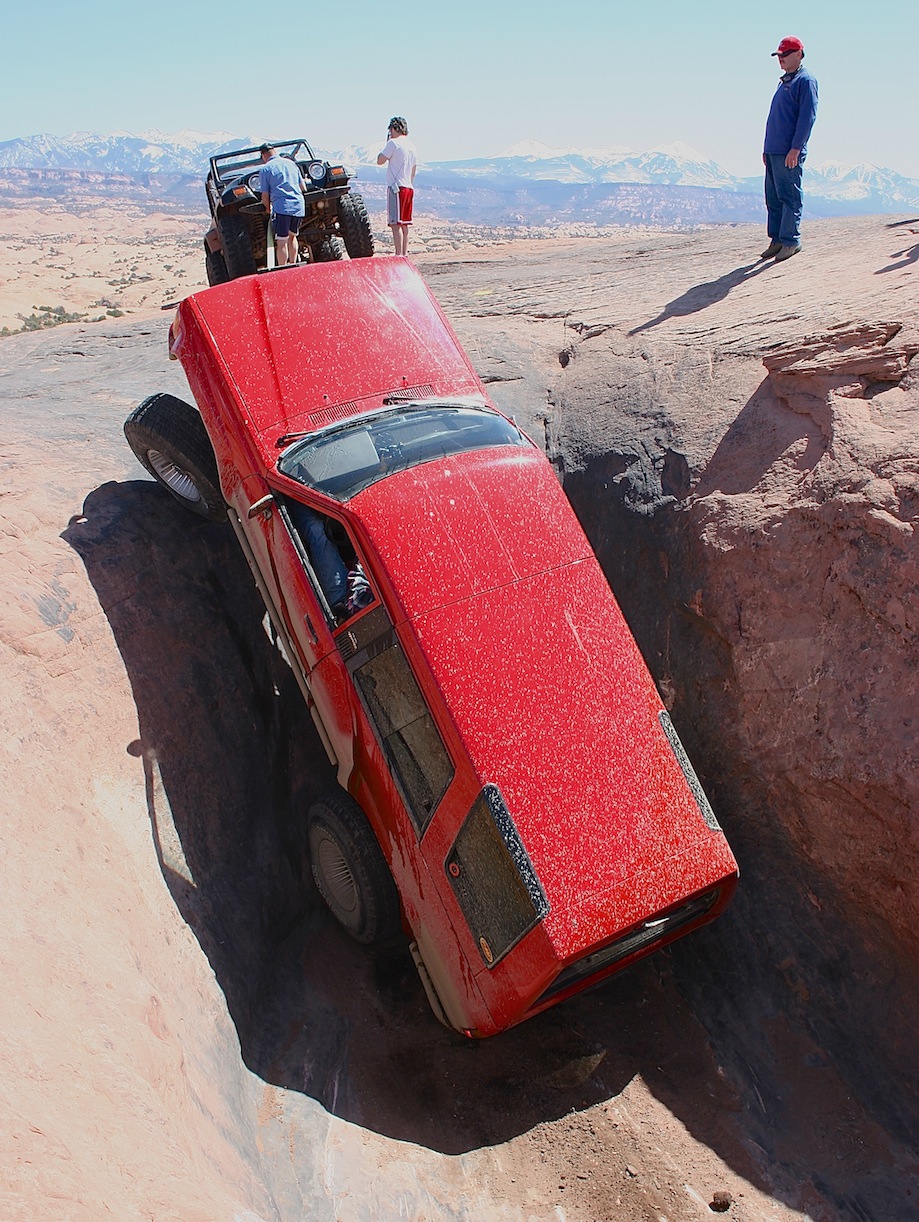
Drive It Like You Paid For It. You did or possibly still are.
My nickname, Redline, can be interpreted a few ways, however my normal method of driving does not include the top of the rpm range. Occasionally I open the throttle and bounce the tachometer needle against governor without fear. These rare visits to the stratosphere are within the design parameters of modern engines, and have yet to prove detrimental to their longevity.
Care and maintenance do matter, but so does driving style. The British have a term, Vehicle Sympathy or Mechanical Sympathy, which accurately explains a key ingredient. Driving proficiently, with an eye on vehicle care, maybe even taking pride in doing it well while not being needlessly rough on the mechanicals.
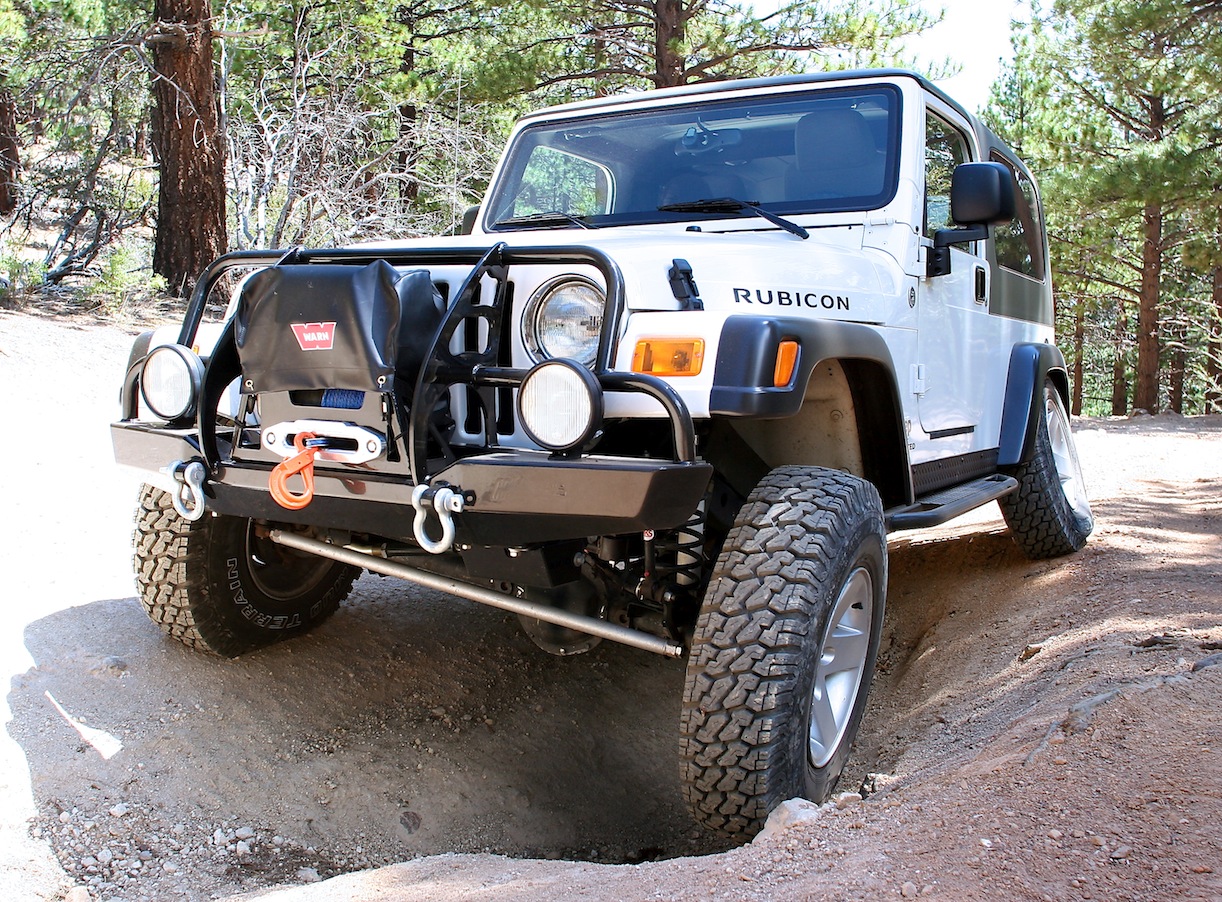
Make Your Brakes Last 100k
RoadTraveler’s 100,000 Mile Longevity Challenge is to make your brake pads and/or shoes last for 100,000 miles, or more. It’s not as difficult as you might think, but it may require an attitude adjustment when you’re behind the wheel. To succeed you don’t have to drive slow, I typically drive at or slightly above the speed limit, like most people. You will have to release the accelerator earlier, coast a little (which helps MPG) and use the linear momentum of your vehicle when you need to reduce your speed. This is in contrast to the folks who move almost immediately from the go-pedal to the slow-pedal, converting the fuel they just burned for forward progress into heat wasted heat energy through the braking system.
It doesn’t take only long-distance highway driving to meet this 100k challenge, though I will concede that folks who routinely drive in very heavy city traffic—the kind they have in San Francisco and New York, and many other places—may have a difficult time reaching 100,000 miles. That doesn’t mean they shouldn’t try, maybe reaching 50,000 or 75,000 miles before new brake pads are needed. But for many who travel in moderate city, suburban, or mixed conditions, 100,000 miles on OE brakes is very attainable, even easy.
Driving conditions do matter, and those at both poles may have vastly different results, but most of us are in the middle, and the driver matters much more than the conditions. My real-world examples have been driven in heavy city and freeway traffic, off-highway, and on long-distance road trips. I do a fair amount of towing too.
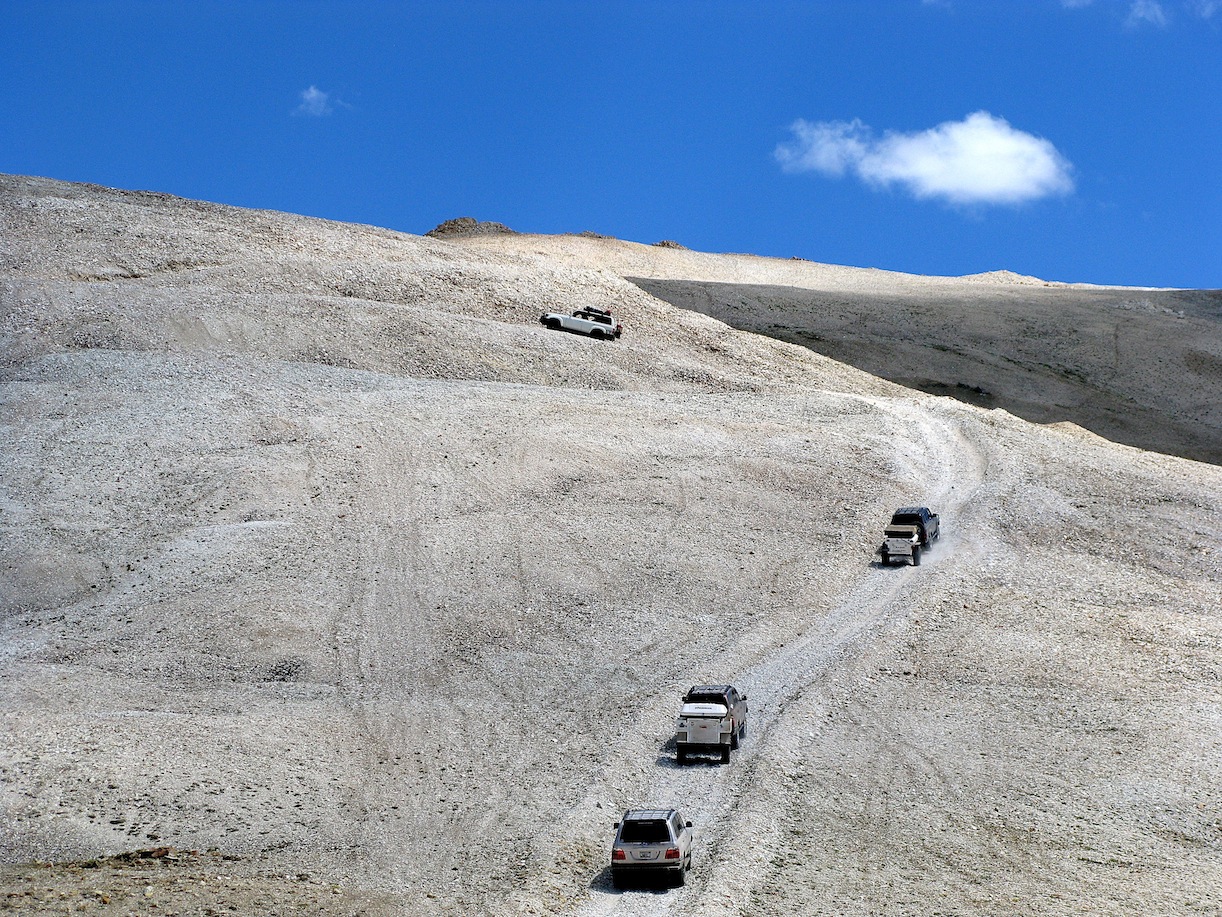
How Can We Get There?
While offering many secondary safety benefits, some techniques that will help us accomplish this 100,000 mile brake longevity is to practice some fundamental driving safe techniques. A few of them are:
Look several seconds ahead for changes in traffic conditions, road hazards, traffic signals, and signs, and absorb and evaluate the data from the constantly changing conditions.
Focus on, and consciously think about how you are operating your machine. It’s fun to do something supremely well, even something we often take for granted, like driving. Focusing will allow for smoother, safer lane changes and turns, better transmission shifts, less fuel consumption, and less brake use.
Don’t follow closely. There are many reasons to avoid following-too-closely (FTC), but needing to use brakes early, often, and firmly is toward the top and directly related to all the safety reasons one should not FTC. Following no closer than a few seconds—longer is better—will offer better sightlines, and the ability to slow down by simply releasing the accelerator instead of immediately going for the brakes.
Release the accelerator earlier when needing to slow or stop. This is the premier principle for reducing brake wear and is connected to looking several seconds ahead and not following-too-closely. Once conditions dictate we need to cease accelerating or cruising at a steady speed, the sooner we reduce pressure or completely release the skinny pedal, the further we can travel on the fuel already consumed and the less brake wear we’ll incur while slowing or stopping. Unless you are on a very steep hill, once the accelerator is released you will start to loose momentum, reducing speed without the brakes. So simple, but I don’t see much of this from the automotive masses. In fact, the opposite is true, there’s a bunch of needless pedal bashing.
I like to think of slow declaration while coasting as free travel, or as my Tundra’s dash computer readout sometimes says, 99 miles-per-gallon, the opposite of idling. When we start coasting to slow down, even short distances, we are traveling with the throttle closed and consuming very little fuel. Every mile-per-hour we are able to slow without using our brakes is friction material we have conserved.
In addition to saving brake system wear you are also keeping your brakes cool by not using them early, often, or hard. Modern braking systems are generally very good, and can convert large amounts of energy to heat, but eventually all brakes will fade if used aggressively. The less you use them the more they will be there for you when you need them. Low gears and/or manual transmissions can help, but are not required to meet the 100k brake challenge.
NOTHING WRITTEN HERE INSINUATES YOU SHOULDN’T USE YOUR BRAKES TO SLOW OR STOP YOUR VEHICLE AS MAY BE NECESSARY, NOR OPERATE YOUR VEHICLE IN A SAFE AND PRUDENT MANNER. YOU DO! You are the one in control and all the responsibility is yours.
Real World Examples
In the Next Post
Copyright © 2012 James Langan
Operating and working on vehicles can be both fun and hazardous. Like others, I’ve made stupid and dangerous mistakes, but I’ve been lucky, and never been seriously injured. Sometimes we needlessly tempt fate because of bad habits or a lack of training. Using tire chocks when working under a car is a great idea, but before chocks are used we should practice the most basic method of securing our vehicles.
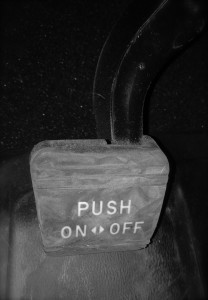
The Parking Brake
I have always practiced and taught that the parking brake should be regularly and properly used (with few exceptions, like ice). Unfortunately many otherwise knowledgeable and skilled drivers routinely do not use their parking brake, or use it incorrectly.
Properly means that the parking brake should be firmly applied to hold the vehicle’s weight, on level ground or on an incline. Then the vehicle’s weight should be allowed to rest on the brake before the transmission is put in gear or Park. Firmly apply the parking brake, shift into neutral, release the service (foot) brakes, and confirm the parking brake is holding the vehicle. Then shift into Park if your A/T has a Park detent–many large RVs, buses, and trucks do not—or release the clutch on a manual transmission with the gear selector in first or reverse, the lowest gears.
With routine and proper use of the parking brake, the parking brake mechanisms are exercised and continue to function. The operator will know how well the brake is working, how firmly it should be applied, and when it needs adjustment.
There are other benefits to practicing this, like not routinely making the parking pawl on an automatic transmission hold the vehicle (wear), and shifting easily out of Park while on an incline. But surely the biggest benefit is assuring that your vehicle is safely and properly parked.
If you only have the habit of using the transmission or the parking brake, and you forget to use that one method, a driverless-moving-vehicle can result. I’ve seen this many times, mostly recently a few weeks ago at my favorite coffee shop. A college kid parked his car and was walking into the store for his cup of morning medicine. Before he reached the door his car passed him, rolling into the back of another, which was parked in front of the glass wall where I was sitting. His car could have run him over, or come through the storefront, but bent bumpers were the only result of his negligence.
Does your parking brake footpad or handle lack signs of use?
Copyright © 2012 James Langan
I’ve been waiting to post this for several weeks. Our endless autumn weather in Nevada has finally changed to winter (thankfully), so I’m motivated to share and provide commentary. I had to search a while to find the original, uncut version that I viewed last month, which includes the car driver’s and passenger’s relief and exclamations after, as well as the police toward the end.
In addition to the oh #@!^ moment close call and entertainment value, there are some driver control lessons we can glean. I’ll name a few.
Truck
Watching this the first time, I immediately noted how helpful it was that the semi driver did not apply his brakes. Surely slowing down before almost running over the plow truck, fishtailing across the roadway, and nearly hitting other traffic head-on would have been nice. But once he was there, in that moment, steering the tractor and continuing to pull that trailer was absolutely the right thing to do (whether it was a conscious effort or not). Attempting to slow or stop would have been normal, and not succumbing to a natural panic reaction is easier said than done. Braking hard would likely have broken lots of things and people. But mentally and physically training ourselves can help in situations like this. There are many training opportunities that help teach this lesson while off-highway. Times when using the brakes might slide, tip, roll, or upset your driving platform, instead keeping a steady throttle, or accelerating is the right thing to do.
Car
It’s not easy to judge, but the video car doesn’t appear to be following the box truck very close, approximately 2-seconds back. Two seconds was an accepted minimum following distance under good conditions, allowing for perception and reaction, until fairly recently when 3-seconds became the new recommended minimum. Even if traction was excellent, visibility was not. When the box truck pulled to the right and started decelerating rapidly for no obvious, visible reason, the car driver—who had been looking for a place to pass—accelerated, reduced his following distance and visibility, and started passing. Once the car driver had a clear view of the doom ahead, he quickly applied his brakes and stopped. This was a good decision, the video confirms that if he had taken longer to stop, there would have been a serious collision.
Even with good decisions and reactions, there can be potentially severe physical and metal reactions to such danger. Did you hear the car engine RPM increase wildly just after the trailer almost slammed into the car (after because it was a reaction, and that takes time). My guess is that because of the uncontrollable stress and almost certain contact, the driver tensed, muscles flexed and limbs extended. I’m inclined to think the right foot that was holding the brake spilled over onto the gas pedal, his leg extending toward the floor. Normal. It’s likely that he also had the clutch pedal smashed to the floor, a good thing. Don’t get caught up on the pedals though, my point is about the involuntary reaction and tension, and the fact that the accelerator was depressed. Some severe reactions can make it very difficulty to control a vehicle, and improper use of the steering, brakes or accelerator are the big ones.
Summary
Following distance, visibility, and sight lines are critically important. In some circumstances being able to come to a quick, smooth, and complete emergency stop is a lifesaver. Luck can help, but it’s better to practice and have confidence. Discipline, focus, and skill are not only potential lifesavers, they make routine operation of machinery (not just vehicles) more enjoyable and safer.
RoadTraveler.net Rolling Forward
Copyright © 2012 James Langan